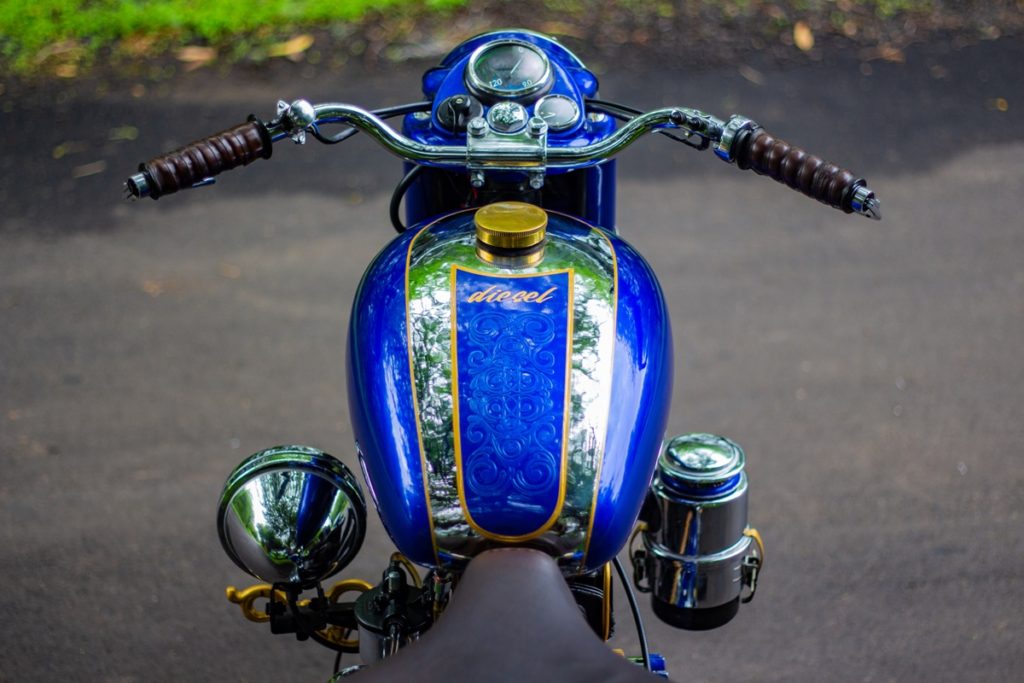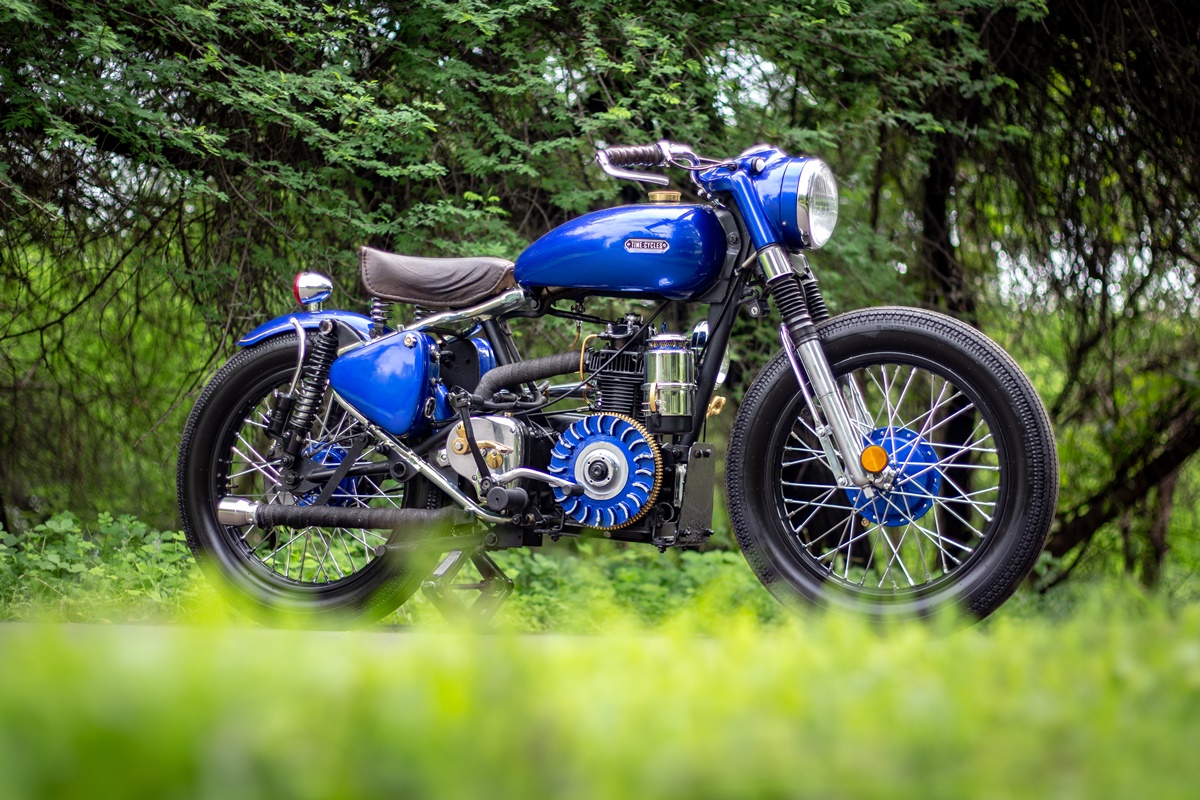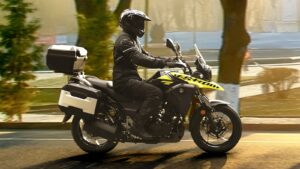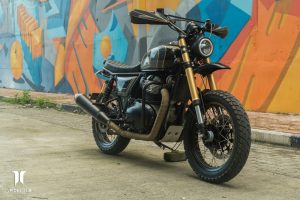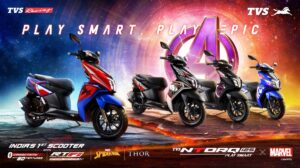
Prologue:
Enfields have been in the market for quite some time. And what was more interesting, were the diesel Enfields, also referred to as Enfield Taurus. In today’s era, we don’t get to see these ones quite often, though they were and still are quite a popular choice in rural areas.

Design & Process:
At the start of the journey, the team had a 1959 Enfield Bullet 350 Standard with G2 chassis at our hand. The previous owner wanted a good fuel economy, and thus the motorcycle had to be converted into a diesel-powered one. The team achieved this by using a stationary engine built by Greaves-Lombardini. This is a very common engine swap in rural India; they use it in everything from sugarcane juicers, commercial three-wheeled people carriers vehicles for some hauling around. The engine produces a meager 6.3 HP and is delivered at 3600 rpm, but it does make around 20 Nm of torque at 1600ish rpm. Ride it wisely, it sips about 1.3 liters of diesel per 100 kilometers. What the engine lacks in performance, makes up for in fuel efficiency.
Looking at the motorcycle, it clearly needed a LOT of work. A complete nut and bolt restoration was done and the team was working with the authorities to endorse the diesel engine on the RC. The team decided to customize a bobber while maintaining Enfield essence, but with modern touches.

The idea was to reduce the weight to the fullest possible. The airbox, battery box, mudguards, chain guard were discarded. The Shocks were replaced by OEM gas-charged shocks, and the team used shorter springs with altered compression rates. The front was lowered as well by around 2 inches and altered the damping to make it more compliant. Stock tires 3.25-19″ were replaced with Shinko 4.00-19″; the new tires are taller and considerably wider.
A classic butterfly style handlebar was added to get the perfect ergonomics. The team installed an old-school, custom made bicycle-style springer saddle add to the sex appeal which was wrapped in brown leather. The seat was hand-stitched to perfection by artisans who have been doing this for generations, which provides very comfortable seating. The grips were then wrapped in leather TripMachine Company, which we polished to match our saddle. The team added custom made bar end levers in brass and finished them up in chrome. The mudguard was also hand fabricated for a flawless fit.

The team decided to bring the motorcycle up to modern times and started work on the electricals. The motorcycle was originally running a 6V system, but a custom alternator and a handmade wiring harness were installed for a 12V custom electrical system, capable of running 200W on demand. The old filament bulb in the headlight was replaced with Philips H4 LED bulb along with an additional 100W fog light, 3000K Philips H4 Rally bulb. In order to get a clean look, the team had to hide the turn signals/ indicators. The team chose to stick with the headlamp casquette instead of the classic bates style light. Hence, the team decided to use the pilot lamps as indicators. The rear indicators were assembled using different off the shelf parts and custom machined bits. The team decided to change the existing horn to the Hella trumpet horn. The team made the air compressor and other electronics to be hidden in one of the toolboxes. Battery, main electrical power switch, and fog light switch were neatly integrated into the other toolbox. The team also fabricated a registration plate and added a dedicated registration plate light/ tail light to finish it up. In order to leave no stone unturned, the team also adopted a modern lock set to the older frame that originally was meant to be used with a long neck padlock along with a center stand.
As a part of the re-imagination, the team reworked the speedometer and delicately placed an actual peacock feather on the dial. We used the ampere meter casing and a quartz movement was installed by one of the best precision watchmakers in the state. The clock dial was also given the peacock feather treatment to match. The label on the trumpet reads Navilu, a Kannada word which translates to peacock, and so was the color matched to that.

A few other parts like the front brake cam, part of the flywheel, wheel hubs, fog light mount, air filter, and a diesel fuel line were carefully hand-painted in gold and detailed to perfection. The painted parts and the custom painted frame were then sent to a 3M car care workshop for paint correction and surface protection treatment.
The team took the engine apart, replaced all the bearings, and a new piston. For better cooler air breathing, the team swapped the valves and lapped the head to our spec; the engine was breathing fresh air now. Keeping the theme in mind, the exhaust to replicate the sound of thunder at certain revs. The clutch was also upgraded to accommodate more plates, and tended to entire four-speed gearbox internals. A larger, custom made, 19T front sprocket was installed to aid the overall delivery. The engine cover was also discarded and let the exposed spinning flywheel create some drama.

Verdict:
The team has done a spectacular job. They have not only managed to restore the bike to its full glory but also have added to the aesthetics of the bike while customizing it to a bobber.








